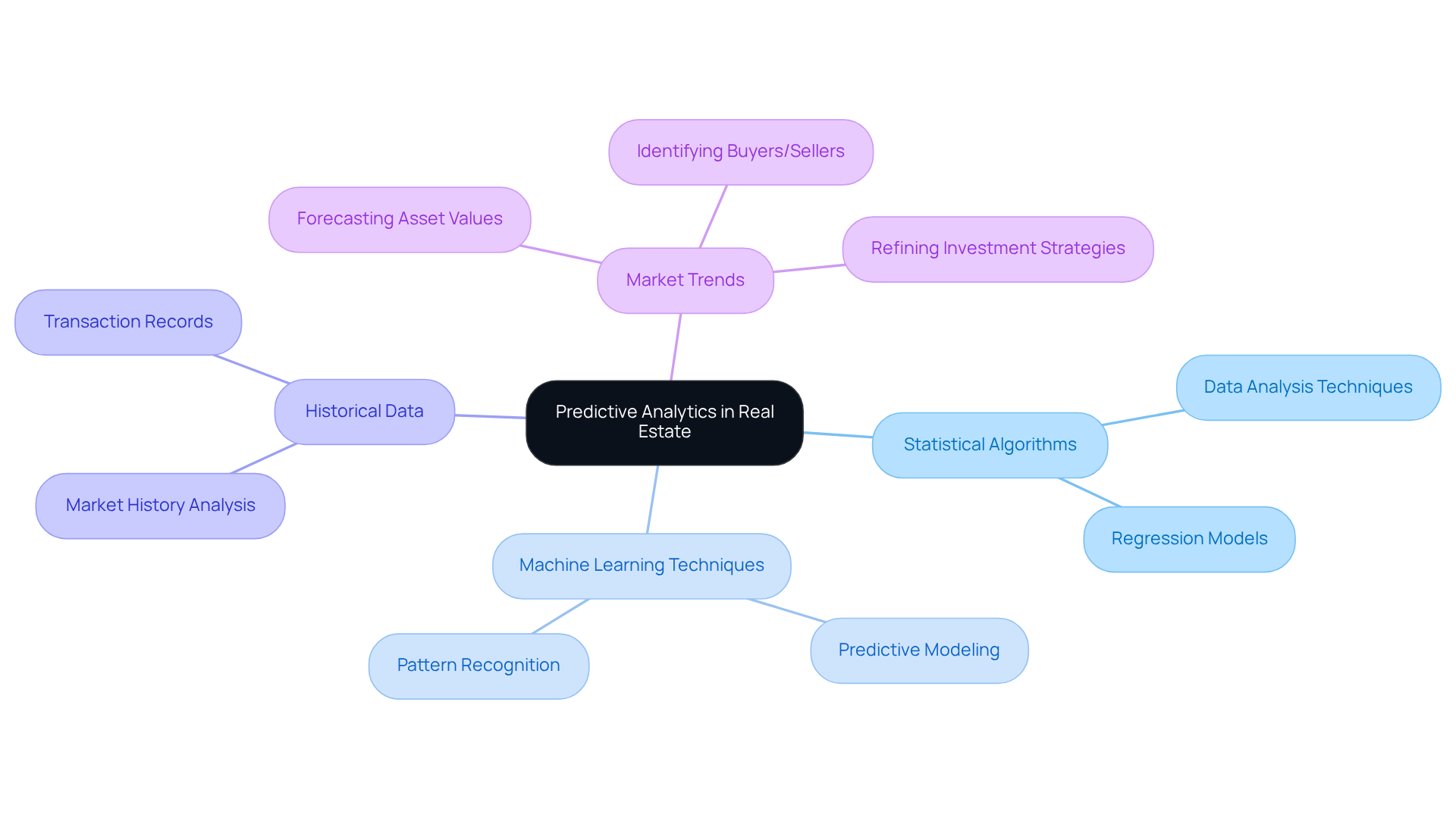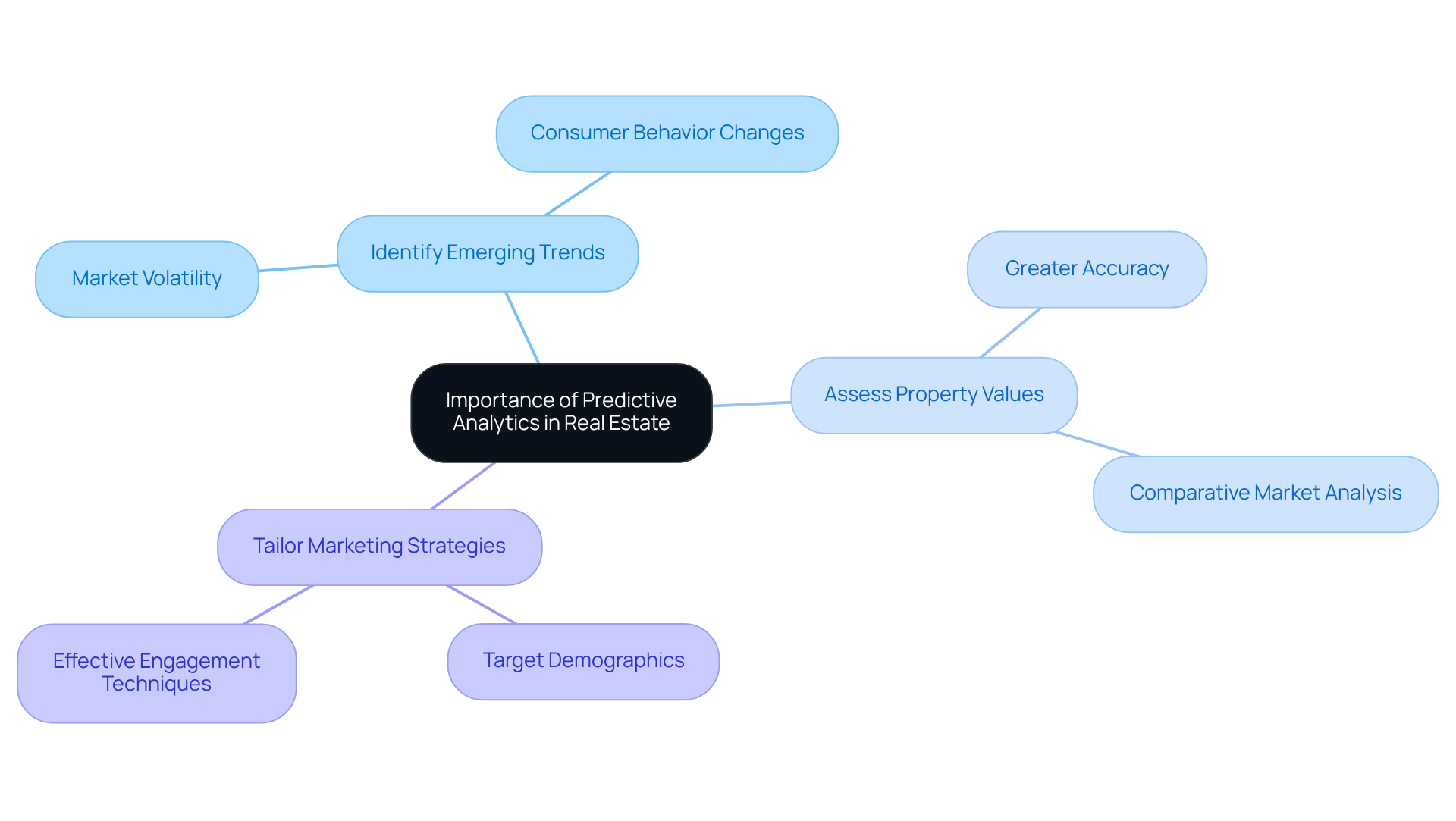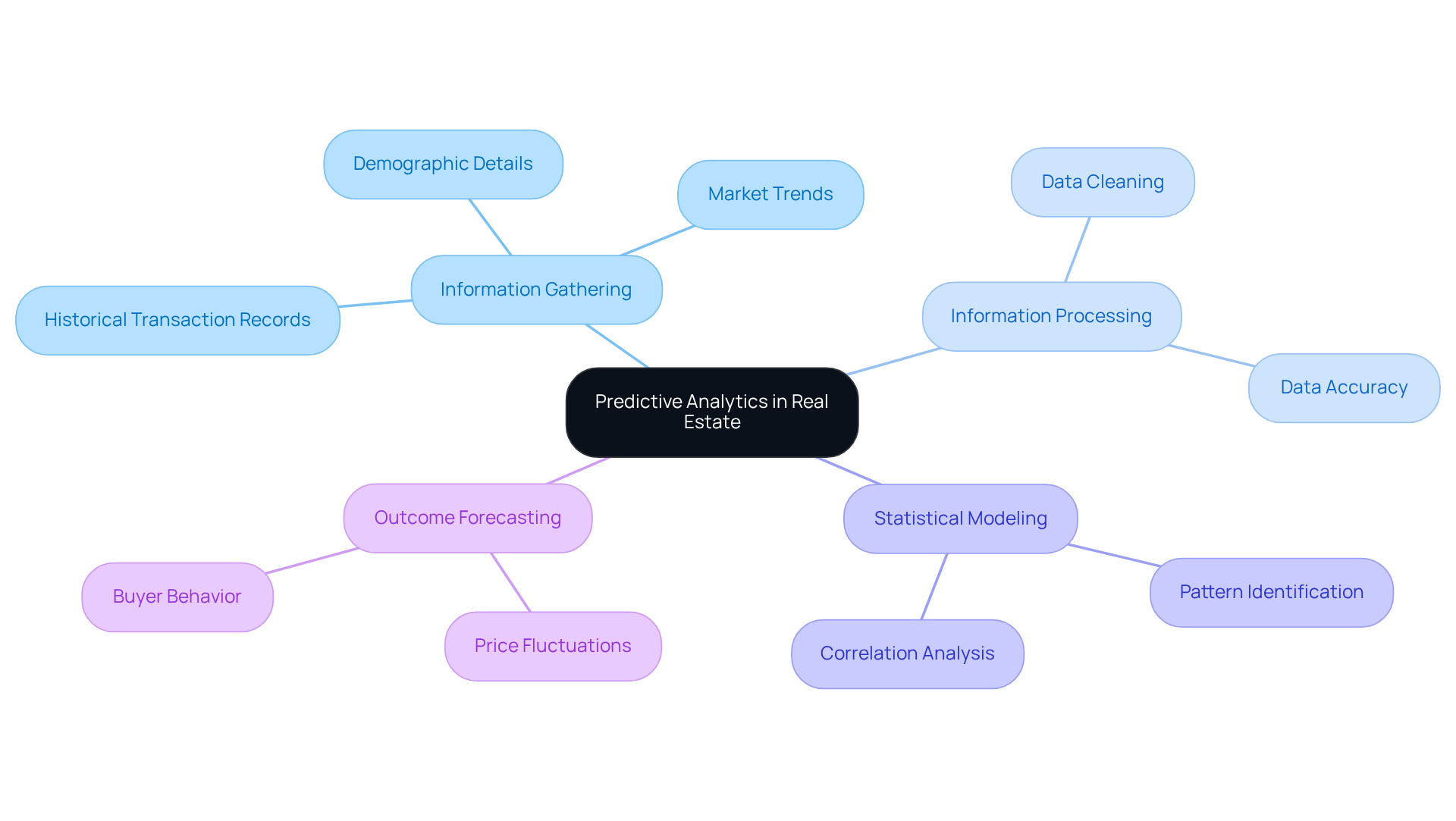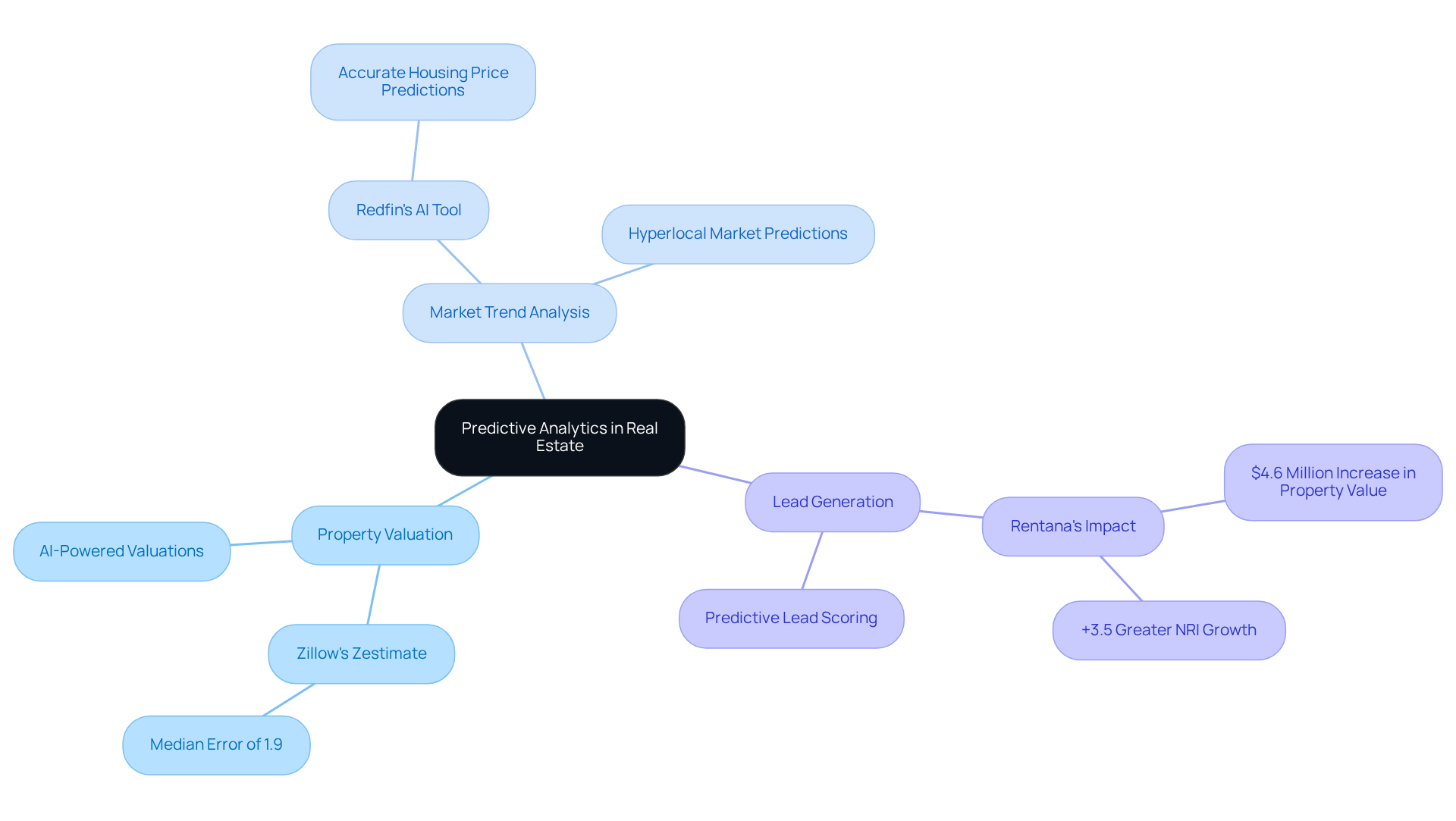Overview
Predictive analytics in real estate employs statistical algorithms alongside historical data to forecast future market trends and property values. This approach empowers stakeholders to make informed decisions. The significance of predictive analytics is underscored by its ability to:
- Identify trends
- Accurately assess property values
- Customize marketing strategies
Consequently, it reduces risks and enhances profitability in a volatile market.
Introduction
The real estate market presents a complex landscape, shaped by fluctuating trends and unpredictable buyer behaviors. Property professionals striving to navigate this volatility find predictive analytics to be a powerful tool. This approach enables them to make data-driven decisions that significantly enhance their competitive edge. By harnessing historical data and advanced statistical algorithms, stakeholders can forecast market shifts and identify lucrative investment opportunities. However, the pivotal question remains: how can these insights transform the operations of real estate professionals in an ever-evolving market?
Define Predictive Analytics in Real Estate
What is predictive analytics in real estate involves the application of statistical algorithms, machine learning techniques, and historical data to forecast future outcomes related to transactions and market trends. This analytical approach empowers property professionals to anticipate shifts in asset values, identify potential buyers and sellers, and refine investment strategies.
What is predictive analytics in real estate involves examining patterns derived from historical data to provide insights that enable stakeholders to make informed decisions, thereby enhancing their competitive advantage in the market.

Explain the Importance of Predictive Analytics in Real Estate
The importance of what is predictive analytics in real estate cannot be overstated. Understanding what is predictive analytics in real estate empowers agents and investors to make informed, data-driven decisions, thereby reducing uncertainty in a market frequently marked by volatility. By employing sophisticated forecasting models, property professionals can:
- Identify emerging trends
- Assess property values with greater accuracy
- Tailor marketing strategies to effectively engage specific demographics
This analytical approach not only boosts operational efficiency but also alleviates risks associated with investment decisions, ultimately resulting in enhanced profitability and improved market positioning.

Identify Key Components of Predictive Analytics
The essential elements of what is predictive analytics in real estate are critical for informed decision-making. These encompass:
- Information gathering
- Information processing
- Statistical modeling
- Outcome forecasting
Information collection involves the systematic gathering of historical transaction records, market trends, and demographic details. This data is meticulously processed and cleaned to ensure its accuracy. Furthermore, statistical modeling employs sophisticated algorithms to identify patterns and correlations within the data. Consequently, outcome prediction utilizes these models to forecast future events, such as price fluctuations or buyer behavior. Together, these components create a robust framework that empowers property professionals to make knowledgeable choices based on empirical evidence, which demonstrates what is predictive analytics in real estate.

Provide Examples of Predictive Analytics Applications in Real Estate
What is predictive analytics in real estate is crucial, as it includes applications such as property valuation, market trend analysis, and lead generation. For instance, Zillow employs advanced forecasting models to assess home values by analyzing historical sales data alongside current market conditions. Notably, Zillow's AI-powered Zestimate valuations boast a median error of merely 1.9% in estimating home values, underscoring the accuracy of analytical forecasting in property valuation. This approach not only enhances the precision of property assessments but also empowers agents to identify areas with growth potential, guiding clients toward lucrative investment opportunities.
Furthermore, forecasting analytics refines marketing strategies by targeting potential buyers based on their likelihood to purchase, thereby streamlining lead generation efforts and minimizing client acquisition costs. Moreover, case studies like Rentana's, which reported a $4.6 million increase in property value due to its AI-driven platform, illustrate the tangible impact of analytics within the housing market. These applications illustrate what is predictive analytics in real estate, emphasizing its substantial influence on promoting informed decision-making and strategic planning within the sector.

Conclusion
Predictive analytics in real estate stands as a transformative tool, leveraging statistical algorithms and historical data to forecast market trends and transaction outcomes. This powerful analytical approach empowers real estate professionals to anticipate changes in property values, identify potential buyers and sellers, and strategically refine investment plans, thereby enhancing their competitive edge in a fluctuating market.
The significance of predictive analytics is profound, as it enables agents and investors to make informed, data-driven decisions that mitigate risks associated with market volatility. By identifying emerging trends, accurately assessing property values, and tailoring marketing strategies, stakeholders can optimize their operations and improve profitability. The key components of predictive analytics—information gathering, processing, statistical modeling, and outcome forecasting—create a comprehensive framework for making knowledgeable decisions grounded in empirical evidence.
As the real estate landscape evolves, embracing predictive analytics becomes essential for those seeking to stay ahead. The applications of this analytical approach, ranging from precise property valuations to targeted marketing strategies, illustrate its substantial impact on decision-making and strategic planning. By leveraging these insights, real estate professionals can not only enhance operational efficiency but also seize lucrative opportunities in an increasingly competitive environment.
Frequently Asked Questions
What is predictive analytics in real estate?
Predictive analytics in real estate involves the use of statistical algorithms, machine learning techniques, and historical data to forecast future outcomes related to transactions and market trends.
How does predictive analytics benefit property professionals?
It empowers property professionals to anticipate shifts in asset values, identify potential buyers and sellers, and refine investment strategies.
What types of data are used in predictive analytics for real estate?
Predictive analytics utilizes historical data to examine patterns and provide insights.
How does predictive analytics enhance decision-making in real estate?
By providing insights derived from historical data, it enables stakeholders to make informed decisions, thereby enhancing their competitive advantage in the market.




